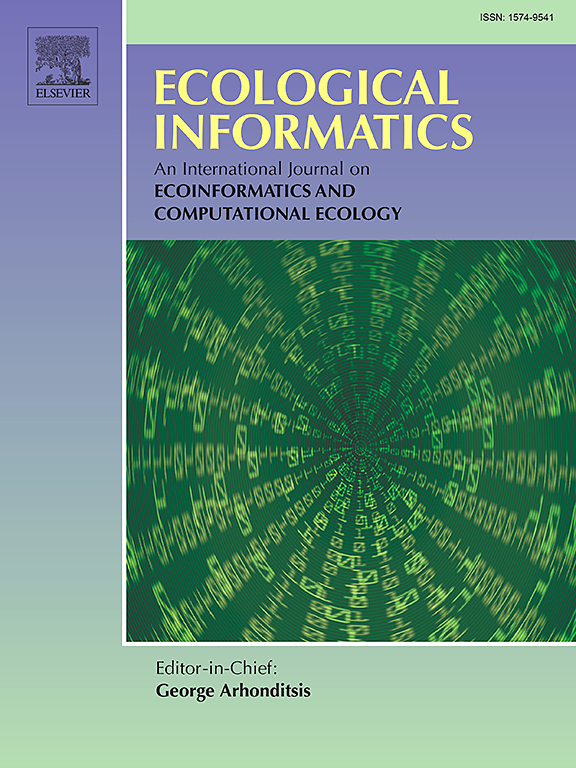横跨大堡礁的气旋波破坏的空间风险
IF 5.8
2区 环境科学与生态学
Q1 ECOLOGY
引用次数: 0
摘要
热带气旋会产生破坏性的海浪,透过移动和破坏,对珊瑚造成大规模而零星的结构性破坏。这种损害会阻碍积极管理和干预措施的有效性。在这里,我们使用了一个基于过程的光谱波模型,结合了1500多个合成气旋轨迹来估计大堡礁(GBR) 3000多个珊瑚礁的高分辨率(20-200米)近底波速度。然后,我们应用具有似然推理的统计模型来预测给定气旋强度和珊瑚礁空间排列的损害,并使用五个气旋的现场观测对模型进行校准。这使我们能够定义有效的基于模型的速度阈值,近岸珊瑚礁为2.5米/秒,近海珊瑚礁为3.1米/秒,以预测珊瑚损害。这些阈值超过了分支珊瑚和板状珊瑚承受海浪能量的机械强度。大堡礁对气旋破坏的脆弱性因大陆架而异。虽然近海珊瑚礁比近岸珊瑚礁更耐波,但在气旋的影响下,中央外大陆架珊瑚礁的预测受损概率更高(11%),可能是因为这些小而稀疏的珊瑚礁在消散波浪能量方面效率较低。在整个GBR中,我们分别确定了前10%暴露最多的气旋热点和前10%暴露最少的避难所,它们经历高和低气旋波速的可能性相对较高。我们的模型提供了一个预测工具和风险图来评估珊瑚礁对飓风的脆弱性,突出自然干扰避难所,为珊瑚礁恢复力的管理策略提供信息。本文章由计算机程序翻译,如有差异,请以英文原文为准。
The spatial risk of cyclone wave damage across the Great Barrier Reef
Tropical cyclones generate destructive waves that cause large-scale yet patchy structural damage to corals through dislodgement and breakage. Such damage can impede the effectiveness of active management and interventions. Here, we used a process-based spectral wave model combined with over 1500 synthetic cyclone tracks to estimate high-resolution (20–200 m) near-bottom wave velocity on more than 3000 reefs across the Great Barrier Reef (GBR). We then applied a statistical model with likelihood inference to predict damage given cyclone strength and reef spatial arrangement, and calibrated the model using field observations from five cyclones. This enabled us to define effective model-based velocity thresholds of 2.5 m/s for nearshore reefs and 3.1 m/s for offshore reefs to predict coral damage. These thresholds exceed the mechanical strength of branching and tabular corals to withstand wave energy. Reef vulnerabilities to cyclone damage vary across the GBR shelf. Although offshore reefs are more wave-tolerant compared to nearshore reefs, the central outer-shelf reefs have a higher predicted probability of damage given a cyclone (11 %), potentially because these small and sparse reefs are less effective in dissipating wave energy. Across the GBR, we identified the top 10 % most exposed cyclone hotspots as well as the top 10 % least exposed refugia with relatively high probabilities of experiencing high and low cyclonic wave velocities, respectively. Our model provides a predictive tool and risk maps to assess reef vulnerability to cyclones, highlighting natural disturbance refugia to inform management strategies for reef resilience.
求助全文
通过发布文献求助,成功后即可免费获取论文全文。
去求助
来源期刊

Ecological Informatics
环境科学-生态学
CiteScore
8.30
自引率
11.80%
发文量
346
审稿时长
46 days
期刊介绍:
The journal Ecological Informatics is devoted to the publication of high quality, peer-reviewed articles on all aspects of computational ecology, data science and biogeography. The scope of the journal takes into account the data-intensive nature of ecology, the growing capacity of information technology to access, harness and leverage complex data as well as the critical need for informing sustainable management in view of global environmental and climate change.
The nature of the journal is interdisciplinary at the crossover between ecology and informatics. It focuses on novel concepts and techniques for image- and genome-based monitoring and interpretation, sensor- and multimedia-based data acquisition, internet-based data archiving and sharing, data assimilation, modelling and prediction of ecological data.
 求助内容:
求助内容: 应助结果提醒方式:
应助结果提醒方式:


